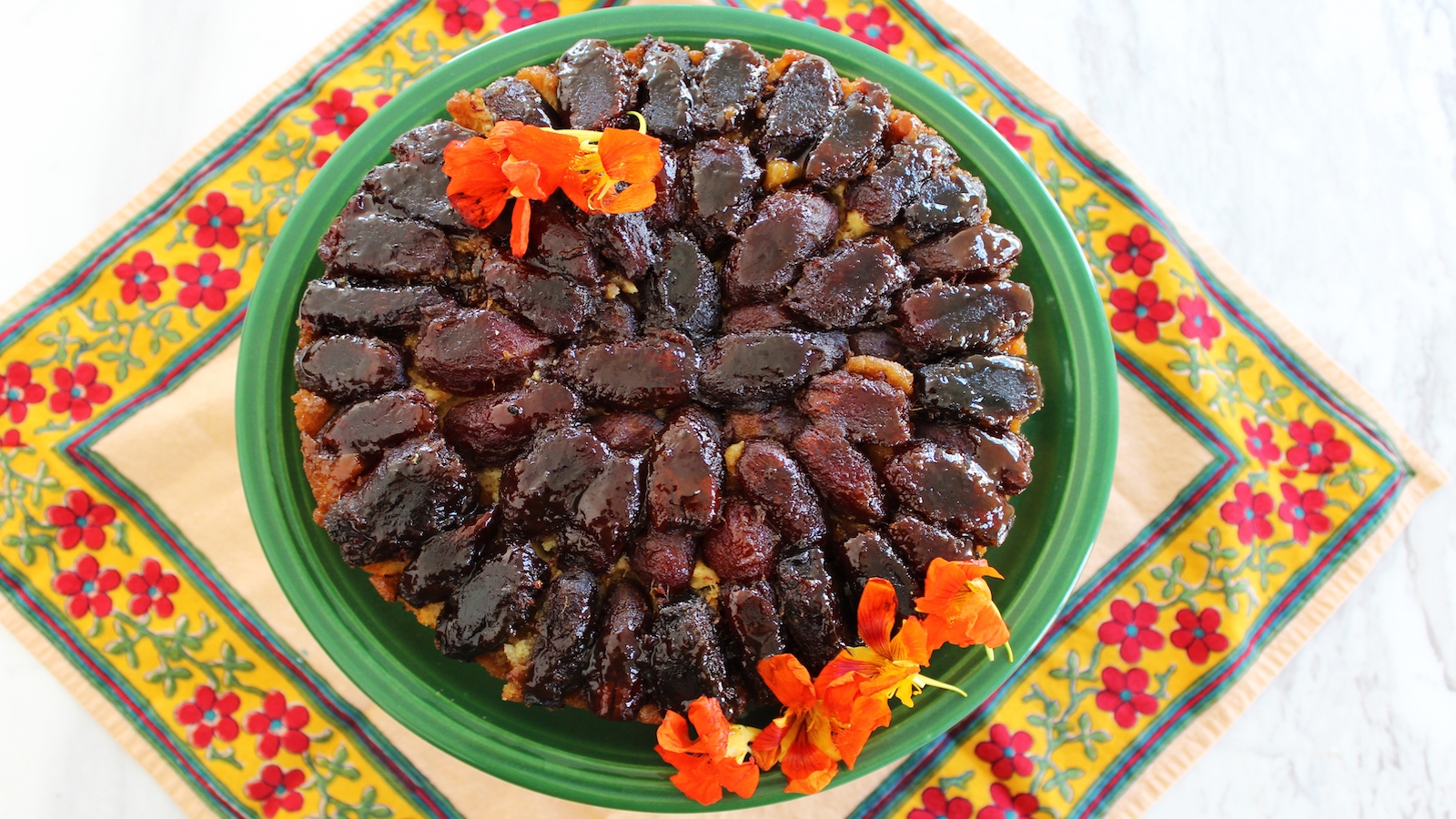As a kid in Hebrew School, I learned that my classmates would have apples and honey and round challah at Rosh Hashanah to bring in the New Year, and that was pretty much it when it came to food traditions. But at home, it was a different story.
As an Iranian Jew, Rosh Hashanah was an elaborate affair. We’d gather the extended family together for the first two nights of the holiday, the first at my parents’ house, the second at my aunt’s. Dining tables, coffee tables, and folding tables would be lined up to make one long dinner table, covered with tablecloths to accommodate a good 20 or so family members. The table would be spread with platter after platter: mountains of saffron-laced basmati rice, crispy tahdig, and flavorful stews — maybe a deep green stew of celery and lots of herbs, or a tomato-based eggplant stew, tangy with unripe grapes.
But before dinner, we’d (mostly) pause the loud chatter — a lively mix of Persian and English — for a full Sephardic Rosh Hashanah seder. Yes, there were apples and honey. But we’d also have dates, beets, pomegranate seeds, slow-cooked black-eyed peas and beef tongue, Persian leeks, and fried zucchini, each with a symbolic meaning and a blessing for the coming year.
This date upside-down cake takes the dates from my family’s Rosh Hashanah seder and pairs them with the two fragrant ingredients found in so many Persian sweets: cardamom and rosewater. The cake’s batter uses buttermilk for a bit of tang and goes easy on the sugar to provide some balance for the topping: a super sweet combination of velvety dates in a rich butter caramel. It’s a moist and aromatic dessert that pairs perfectly with a glass of amber-colored Persian tea.
The Nosher celebrates the traditions and recipes that have brought Jews together for centuries. Donate today to keep The Nosher's stories and recipes accessible to all.

Persian Upside-Down Cake with Dates and Cardamom
A sweet homage to Persian flavors and Rosh Hashanah traditions.
- Total Time: 1 hour 30 minutes
- Yield: Serves 8
Ingredients
For the date topping:
- 27 Medjool dates
- 6 Tbsp butter, softened
- ½ cup brown sugar
- pinch of salt
- pinch of ground cardamom
For the cake:
- 1 ½ cups all-purpose flour + more for pan
- 2 tsp baking powder
- ¼ tsp salt
- ½ tsp ground cardamom
- ½ cup (1 stick) butter, softened + more to grease pan
- ⅔ cup granulated sugar
- 2 large eggs
- 2 tsp rosewater
- ½ cup buttermilk
To garnish:
edible flowers, ground pistachios or dried rose petals,
Instructions
- In a medium bowl, cover dates with hot water and soak for at least 20 minutes. Remove skin from dates, halve lengthwise, and remove pits.
- Preheat oven to 350°F.
- Butter and flour the sides of a 9-inch round non-stick cake pan.
- For the date topping, cream together butter, brown sugar, salt and cardamom until well combined. Spread butter mixture evenly across the bottom of prepared pan. Arrange date halves over butter mixture in a pattern of concentric circles with their cut sides facing up.
- To make the cake batter, whisk flour, baking powder, salt and cardamom together in a medium bowl.
- In the bowl of an electric mixer, beat butter and sugar together until creamy and pale in color. Add eggs one at a time, incorporating one fully before adding the next. Beat in rosewater to fully incorporate.
- With mixer on low speed, add ⅓ of flour mixture, mixing until just incorporated (do not over-beat). Follow with half of buttermilk, then second third of flour, the other half of buttermilk, then the remaining flour, mixing completely between each addition.
- Spoon batter over arranged dates, spreading evenly and taking care not to jostle dates. Bake cake in middle rack of oven 30-40 minutes, or until a tester comes out clean. Cool cake in pan on a rack for about 5 minutes. Run a knife around edges of cake, then invert onto serving plate, replacing any dates that stick to pan.
- Garnish with edible flowers, ground pistachios or dried rose petals, and serve warm or at room temperature.
- Prep Time: 50 minutes
- Cook Time: 40 minutes
- Category: Dessert
- Method: Baking
- Cuisine: Jewish




Leave a Comment